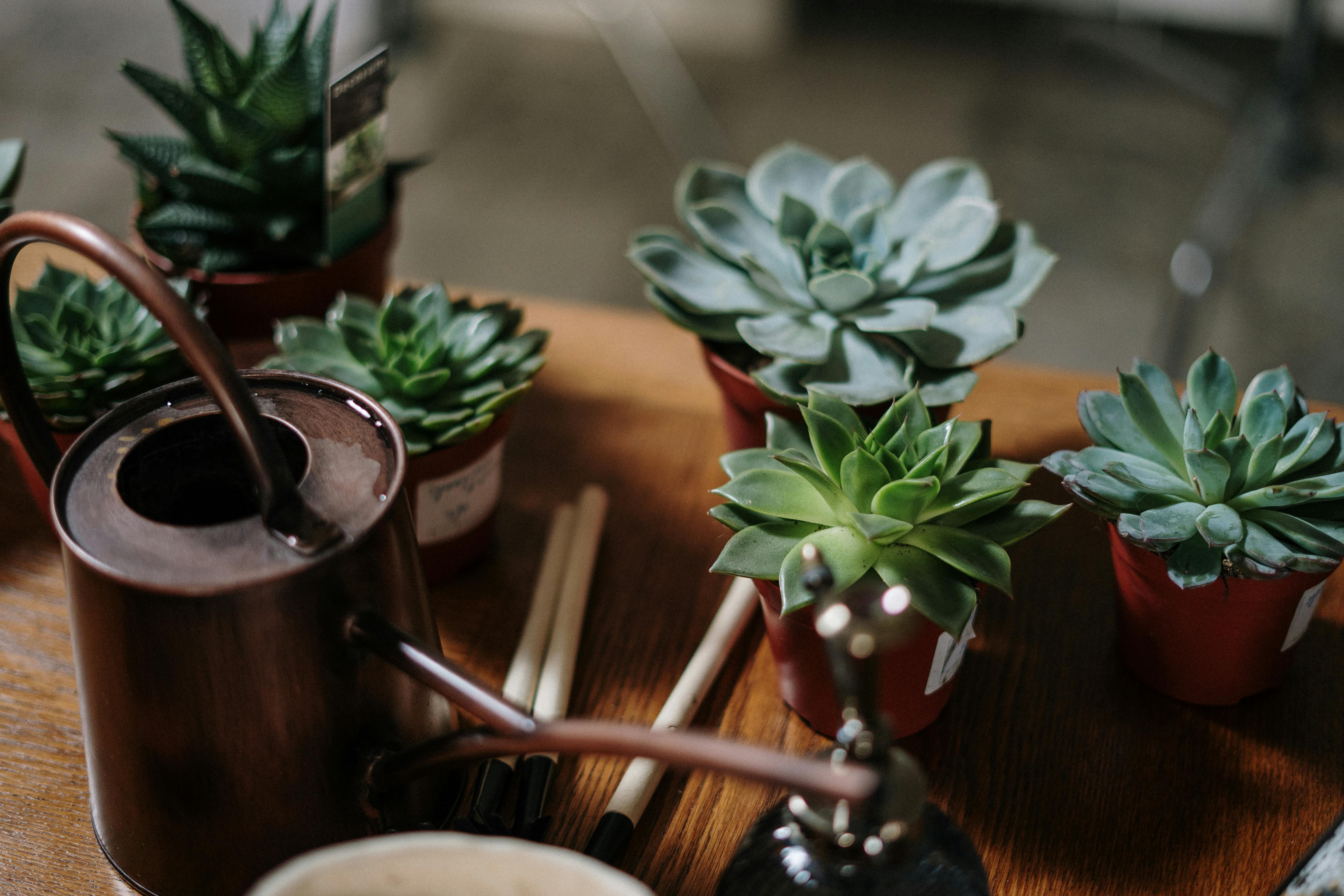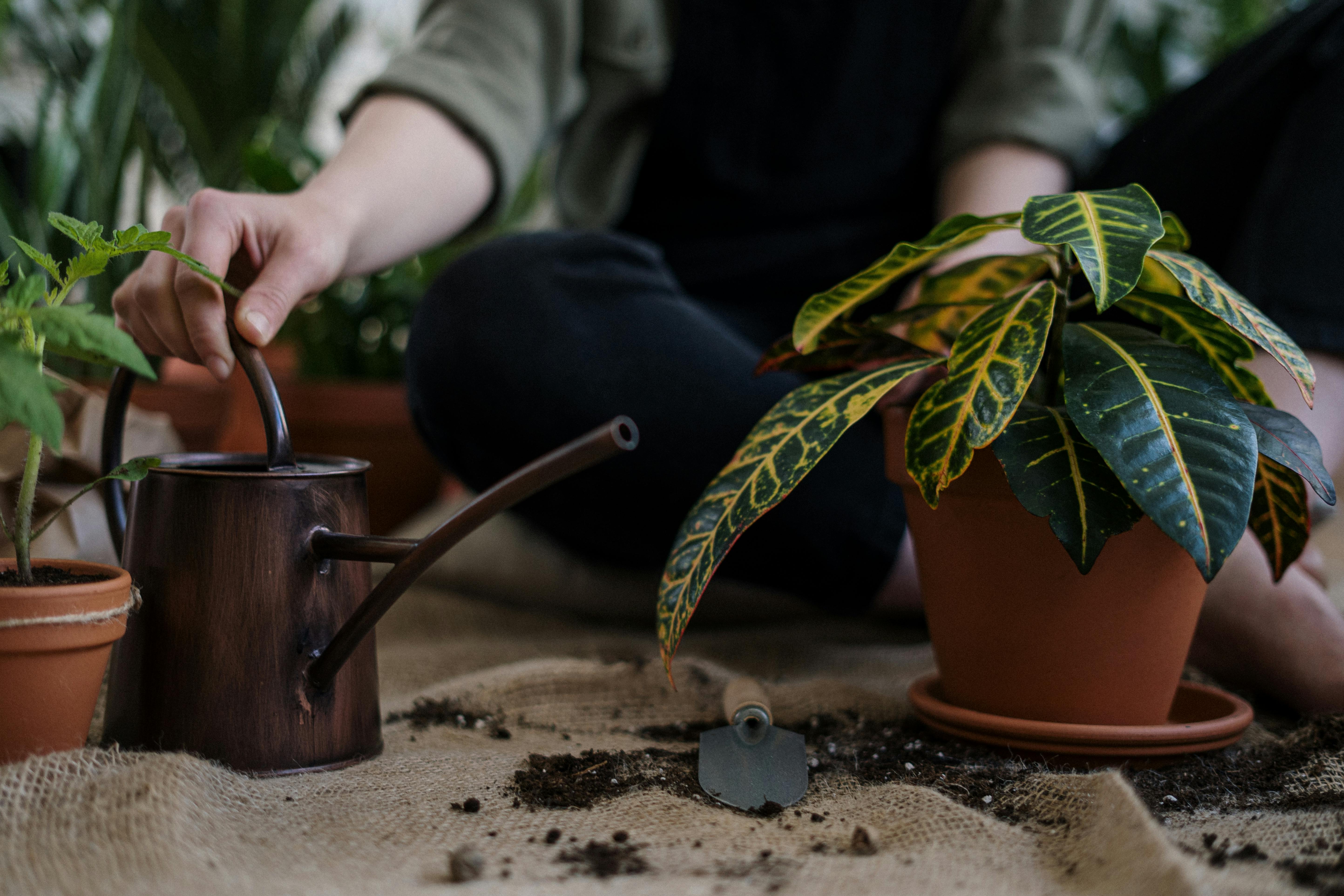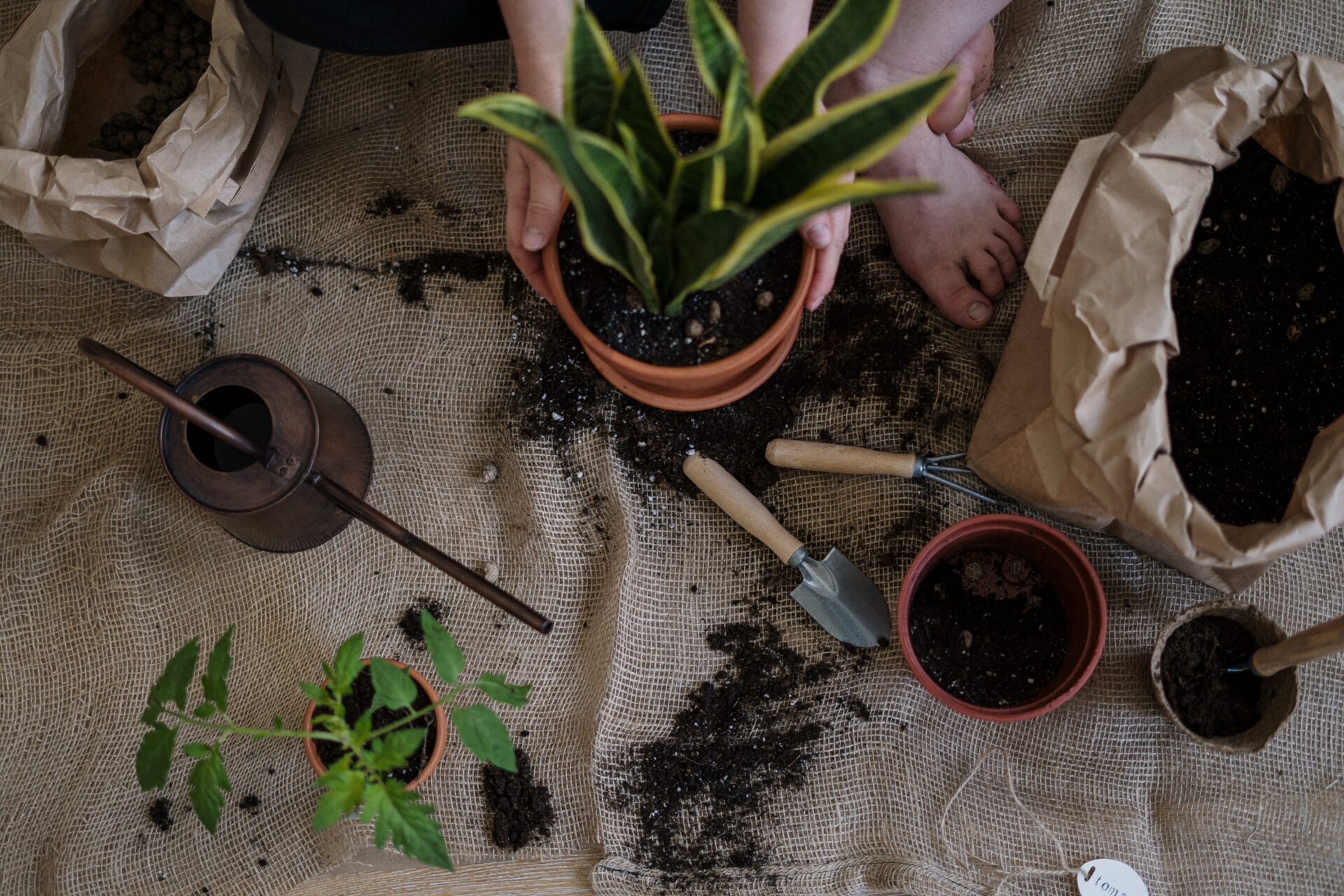Growing blueberries in pots is a great way to enjoy fresh, homegrown berries without having to dedicate an entire garden bed to them. With the right care and attention, you can successfully grow blueberries in containers on your patio, balcony or deck. This guide will provide you with all the information you need to get started.The advantages of growing blueberries in pots are plentiful. Growing blueberries in pots allows for greater mobility and flexibility, as you can move the blueberry plants around to take advantage of the best sunlight, moisture, and temperature. Additionally, blueberries grown in pots can be fertilized more easily than those planted directly in the ground. Controlling soil quality is easier when you are using containers or even hanging baskets, which helps to ensure that your blueberries grow well and produce a high yield. Finally, growing blueberries in pots eliminates the risk of soil-borne diseases that can damage root systems, meaning your plants will remain healthy and you will have a bigger harvest.
Types of Pot for Growing Blueberries
Growing blueberries in pots can be a great way to enjoy fresh fruit without taking up a lot of space. The best way to start is to choose the right type of pot for your needs. There are a few different types of pots available for growing blueberries, each with its own advantages and disadvantages.
One option is a traditional fabric pot, which is lightweight and easy to move around when needed. They also allow for good drainage and aeration, which helps promote healthy root growth. The downside is that fabric pots tend to be more expensive than other types of containers. Additionally, they may not last as long as other options due to their more fragile construction.
Another popular choice is plastic pots, which are inexpensive and come in a variety of sizes and shapes. Plastic containers are also relatively lightweight and provide excellent drainage. However, they may not provide as much aeration as fabric pots because they tend to be more airtight.
Finally, ceramic containers are an excellent choice for blueberry plants because they retain moisture better than other types of containers. They also provide better insulation than plastic or fabric pots, which helps protect the roots from extreme temperatures. The downside is that ceramic containers are heavier than plastic or fabric pots and can be prone to cracking if not handled carefully.
Soil Requirements for Growing Blueberries in Pots
Growing blueberries in pots requires the right type of soil to ensure a productive harvest. The ideal potting mix should be slightly acidic with a pH between 4.5 and 5.5, and it should contain organic matter such as compost or peat moss. Adding sand to the mix will improve drainage and aeration, while adding compost or manure will provide additional nutrients and help retain water. Perlite can also be added to increase drainage and reduce compaction in the soil. Additionally, adding an organic fertilizer at planting time is recommended to ensure adequate nutrient availability during the growing season. To maintain optimal soil conditions, it is important to check the pH regularly and adjust as needed using sulfur or aluminum sulfate. It is also essential to fertilize your blueberry plants every year with an organic fertilizer that’s designed specifically for acid-loving plants like blueberries.
When selecting a pot for growing blueberries, choose one that is large enough for the plant’s root system but not too large, as this can lead to inadequate drainage and root rot. The pot should also have several drainage holes at the bottom so excess water can escape easily. Finally, be sure to use a good quality potting soil in your pot and avoid using garden soil as this may not provide adequate drainage or fertility for your plant.
Sunlight Requirements for Growing Blueberries in Pots
Blueberries are a great addition to any garden, and can be grown in pots or containers if space is limited. Growing blueberries in pots requires the right amount of sunlight, which is important for optimum growth of the plants. Blueberries need full sun, meaning at least six hours of direct sunlight each day. It’s important to place the container where it will receive maximum sunlight throughout the day. This will help ensure that your blueberry plants get the light they need for healthy growth and fruiting.
There are several varieties of blueberry plants that can be grown in containers; however, some varieties are better suited for container growing than others. Highbush blueberries require at least six hours of direct sunlight each day and are more cold-tolerant than other varieties. Lowbush blueberries require less light and grow best in areas with partial shade or filtered sun. Dwarf varieties are also available and require less light than highbush plants.
When growing blueberries in pots, it’s important to choose a pot that is large enough to accommodate the plant’s root system and promote healthy growth. A pot at least 18 inches wide and 12 inches deep is ideal; however, larger pots provide more room for root growth and will help ensure your plants get enough nutrients from the soil. Make sure you use a potting mix formulated specifically for growing berries, as this will provide your plants with the necessary nutrients they need to thrive. Additionally, make sure your pot has good drainage so excess water can escape easily from the roots of your plants.
Blueberry plants need plenty of water to thrive; however, too much water can cause root rot or other problems. It’s important to check the soil regularly to make sure it is not overly wet or dry; if necessary, adjust your watering schedule accordingly. Mulching around your blueberry plants can help conserve moisture and keep weeds at bay; just make sure it does not cover up any foliage or flowers as this can cause damage to the plant’s growth and fruit production.
By following these simple tips for providing adequate sunlight when growing blueberries in containers, you can ensure that your plants get what they need for healthy growth and abundant fruit production!
Watering Requirements for Growing Blueberries in Pots
Blueberry plants require a lot of water to produce large, juicy fruit. When growing blueberries in pots, it is important to provide adequate moisture for the plants. The soil should be kept evenly moist but not soggy. To achieve this, water the container thoroughly until water begins to drain from the bottom. Allow the top inch of soil to dry out between waterings. In hotter climates, it may be necessary to water twice a day during the summer months. If you are unsure if your blueberry plants need watering, check the soil by sticking your finger into it about an inch or two down. If it feels dry, it is time to give them a drink!
It is also important to monitor the pH level of your potting mix regularly and make sure that it is between 4 and 5 for best results. Too much alkalinity in the potting mix can cause nutrient deficiencies and reduce yields. Adding sulfur or other acidifying amendments can help lower pH levels if necessary.
Finally, providing adequate drainage is essential when growing blueberries in pots. Too much standing water can lead to root rot and other problems. Make sure that your containers have several drainage holes on the bottom and use quality potting mix that will allow excess moisture to easily escape from the container.

Planting Blueberry Bushes in Pots
Growing blueberry Bushes in pots is an easy and rewarding way to enjoy the sweet taste of fresh berries. With a little care and attention, you can have a beautiful crop of blueberries right from your own backyard. The key to success is proper soil preparation and the right pot size. Here are some tips to help you get started.
The first step is to choose the right type of pot for your blueberry bush. Most experts recommend using a large, shallow container that is at least 18 inches deep and 18 inches wide. This will give the roots plenty of room to spread out and allow for good drainage. Be sure to use a pot with drainage holes at the bottom so that excess water can escape.
Once you have selected your pot, it’s time to prepare the soil. Blueberries prefer acidic soil, so add some peat moss or composted pine needles to balance out the pH levels in your soil. You should also mix in some slow-release fertilizer as well as some organic matter such as composted manure or fish emulsion.
When planting your blueberry bush, make sure it is placed in an area that gets at least 6 hours of direct sunlight each day. Also make sure that it is not planted too close to any other plants or trees as this can cause competition for nutrients between plants.
Once your blueberry bush is planted, you will need to water it regularly but not too often. It’s best to let the top inch of soil dry out before watering again, as overwatering can cause root rot which can kill your plant. Additionally, fertilize every two weeks during the growing season with an all-purpose fertilizer.
Finally, keep an eye on your plant throughout the growing season for signs of pests or disease such as leaf spot or blight. If you notice any issues, take action immediately by treating with fungicides or insecticides as recommended by your local nursery or garden center.
By following these simple steps, you will be well on your way to harvesting a delicious crop of blueberries from your own backyard!
Harvesting Blueberries Grown In Pots
Harvesting blueberries grown in pots is relatively easy and straightforward. The berries should be picked when they are firm and fully ripe, usually a deep blue-black color. To pick the berries, gently twist them off of the stem and carefully place them in a container. Avoid picking immature or overripe blueberries as these will not last long and can affect the taste of other berries.
Storing Blueberries Grown In Pots
Storing blueberries grown in pots can be done in a few different ways. For short-term storage, you can keep them at room temperature for up to 5 days. For longer-term storage, you should refrigerate them in an airtight container for up to two weeks. Alternatively, you can also freeze the berries for up to one year. When freezing, make sure to spread them out on a baking sheet and freeze until solid before transferring them to an airtight container or freezer bag.
Pruning and Fertilizing Blueberries Grown In Pots
Blueberries are delicious fruits that can be grown in pots. Pruning and fertilizing are essential steps to ensure that blueberry plants grown in pots produce an abundant harvest. Pruning helps to maintain the shape of the shrub, remove dead wood, and encourage new growth. Fertilizing helps to provide the necessary nutrients to support healthy growth.
When pruning blueberry bushes grown in pots, it is important to remove dead or diseased branches first. This will help to prevent the spread of disease or pests. Next, prune any branches that are crossing over each other or rubbing against one another, as this can lead to weakened stems and poor air circulation. Finally, thin out overly dense branches by removing some of the older wood and leaving only the new growth at the base of the plant. Prune annually in late winter or early spring, before new growth begins.
Fertilizing blueberry bushes is also important for keeping them healthy and producing a good yield of fruit. Use a fertilizer specifically designed for acid-loving plants like blueberries, such as one with a combination of nitrogen, phosphorus, potassium, and micronutrients. Apply it around the base of the plant in early spring when new growth begins and again when fruit begins to set on the bush in late summer or early fall. Make sure not to overfertilize as this can cause leaf burn or other damage to your plants.
Growing blueberries in pots can be rewarding when done correctly! With proper pruning and fertilization, you can enjoy a bountiful harvest each season from your potted blueberry plants!

Conclusion
Yes, blueberries can be grown in pots. They require special soil and container conditions and need to be watered frequently, but once these conditions are met, blueberries will thrive in pots. It is important to choose a pot with a large surface area, as well as one that is heavy enough to keep the plant stable. Additionally, proper pruning and fertilization techniques should be used to ensure the best possible results. Growing blueberries in pots allows for flexibility and convenience, making them a great choice for anyone looking to grow their own fruit.
In conclusion, growing blueberries in pots is an accessible option for any gardener looking for a way to enjoy delicious berries without having to have an entire garden. With the right soil, container and care, blueberries can produce berries that are just as flavorful as those grown in gardens.



